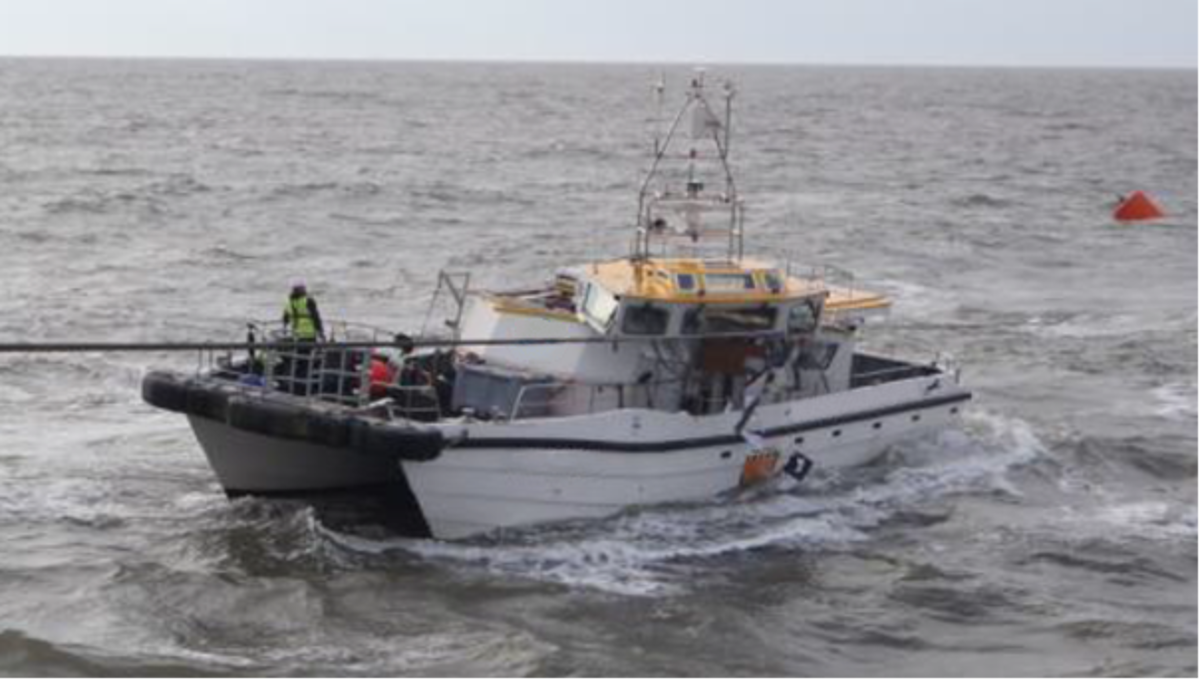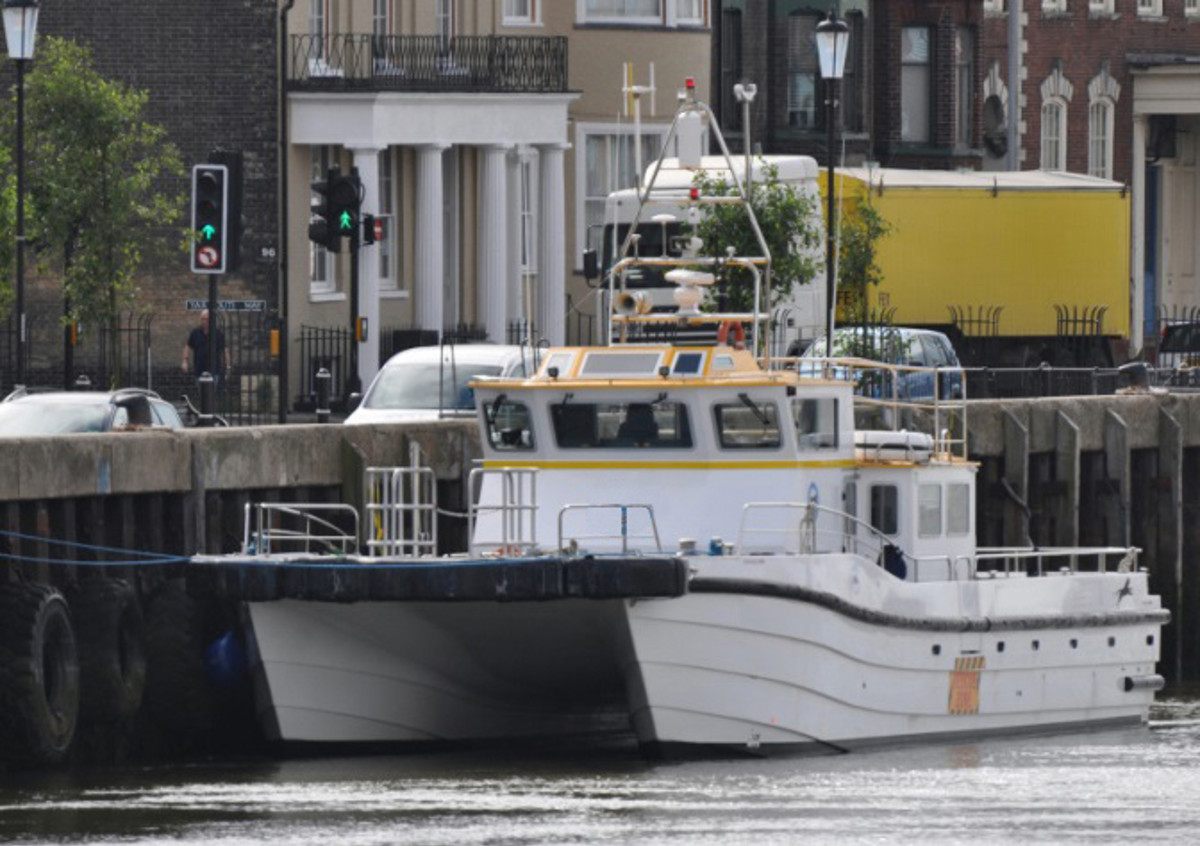Crew transfer vessel in collision with anchor wire
- Safety Flash
- Published on 13 May 2014
- Generated on 15 July 2025
- IMCA SF 07/14
- 2 minute read
Jump to:
A Member has reported an incident in which an offshore wind farm crew transfer vessel (CTV) collided with an anchor wire under tension.
What happened?
The incident occurred when the CTV approached the starboard side boat landing of a cable lay barge. Difficulty was encountered in positioning the vessel onto the boat landing, and at the same time, a pre-alarm on the port engine sounded (indicating overheating exhaust gasses). Owing to this alarm and the subsequent automatic intervention of the electronic engine management system, the CTV lost part of its propulsion power. At this point, the vessel was taken by the current towards the anchor wire. Due to sea conditions causing the CTV to move, the wire acted as a saw and caused significant damage to the wheelhouse. After this the vessel came loose of the anchor wire and the current took the CTV further away. There were no injuries.
During Our member’s investigation, the following points were noted:
- A similar incident had happened with the same CTV earlier in the year.
- Crew transfers are executed so often that they can be considered as a ‘routine’ activity (‘taxi’) leading to risks being overlooked and complacency setting in.
- Crew transfer is an important activity and should be formally risk assessed on each project since environmental conditions differ for each project.
- Reporting, communicating and follow-up of incidents and near misses is important since this incident would have been prevented had the previous incident been properly reported, correctly communicated and follow-up had been in place and adhered to.
Related safety flashes – incidents involving crew transfer vessels
-
IMCA SF 06/14
16 April 2014
-
IMCA SF 06/14
16 April 2014
-
IMCA SF 06/14
16 April 2014
-
IMCA SF 16/13
17 October 2013
-
IMCA SF 12/13
19 July 2013
-
IMCA SF 11/13
26 June 2013
-
IMCA SF 06/13
3 May 2013
Related Safety Flashes – incidents where complacency was identified as a factor
-
IMCA SF 11/12
26 October 2012
-
IMCA SF 07/05
2 May 2005
IMCA Safety Flashes summarise key safety matters and incidents, allowing lessons to be more easily learnt for the benefit of the entire offshore industry.
The effectiveness of the IMCA Safety Flash system depends on the industry sharing information and so avoiding repeat incidents. Incidents are classified according to IOGP's Life Saving Rules.
All information is anonymised or sanitised, as appropriate, and warnings for graphic content included where possible.
IMCA makes every effort to ensure both the accuracy and reliability of the information shared, but is not be liable for any guidance and/or recommendation and/or statement herein contained.
The information contained in this document does not fulfil or replace any individual's or Member's legal, regulatory or other duties or obligations in respect of their operations. Individuals and Members remain solely responsible for the safe, lawful and proper conduct of their operations.
Share your safety incidents with IMCA online. Sign-up to receive Safety Flashes straight to your email.

